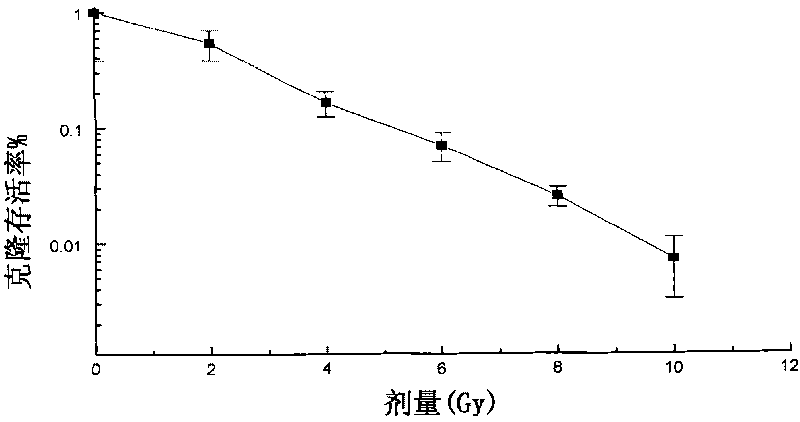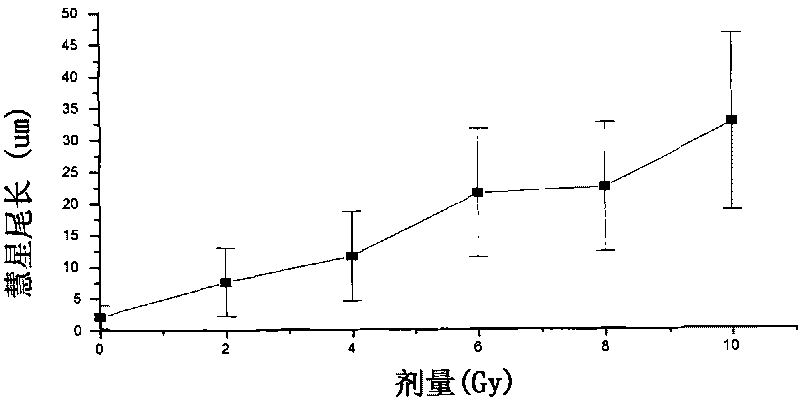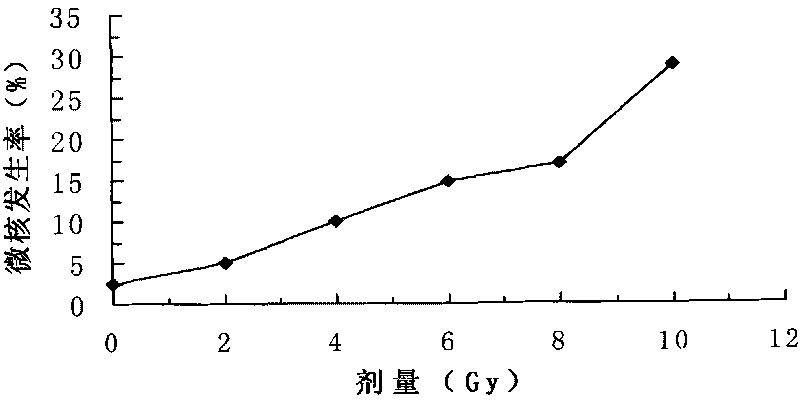Method for detecting instability of radiation-induced genome
A technology of instability and detection methods, applied in the direction of microbial measurement/inspection, biochemical equipment and methods, etc., can solve problems such as genome instability, and achieve the effect of overcoming long observation time and expanding the effect of damage endpoints
- Summary
- Abstract
- Description
- Claims
- Application Information
AI Technical Summary
Problems solved by technology
Method used
Image
Examples
Embodiment Construction
[0021] (1) After digestion of CHL cells in the logarithmic growth phase, carry out under ice bath conditions 60 Coγ-ray irradiation, specifically in this embodiment, after digesting the CHL cells in the logarithmic growth phase, press 1×10 5 The concentration of cells was inoculated into six 25ml culture flasks, put them on ice, and then irradiated. Determination of colony formation rate, SCGE and micronucleus formation rate, see Figure 1-Figure 3 , the results show that: from the cell survival rate curve, it can be seen that with the increase of the irradiation dose, the cell survival rate is significantly reduced; with the increase of the irradiation dose, the length of the SCGE tail of the cells increases, and there is an obvious dose-effect between the two Relationship, the dose-effect relationship conforms to the equation: Y=2.081+0.297X, correlation coefficient r=0.992, P2 , correlation coefficient r=0.983, P<0.0001.
[0022] In fact, through the processing of this st...
PUM
 Login to View More
Login to View More Abstract
Description
Claims
Application Information
 Login to View More
Login to View More - Generate Ideas
- Intellectual Property
- Life Sciences
- Materials
- Tech Scout
- Unparalleled Data Quality
- Higher Quality Content
- 60% Fewer Hallucinations
Browse by: Latest US Patents, China's latest patents, Technical Efficacy Thesaurus, Application Domain, Technology Topic, Popular Technical Reports.
© 2025 PatSnap. All rights reserved.Legal|Privacy policy|Modern Slavery Act Transparency Statement|Sitemap|About US| Contact US: help@patsnap.com



